Passive Acoustic Detection of Vessel Activity by Low-Energy Wireless Sensors
Abstract
:1. Introduction
1.1. Propeller Cavitation
1.2. Passive Acoustic Vessel Detection Methods
1.3. Underwater Sensor Network
1.4. Project Aims
- Develop passive acoustic vessel detection algorithms that can be implemented with very-low-energy processing (of the order of 10 );
- Compare different approaches with mixtures of analogue and digital processing, and continuous and duty-cycled sampling/processing;
- Adapt an existing low cost/power acoustic modem platform to implement a wireless vessel detection device;
- Demonstrate underwater acoustic transmission of vessel detection information;
- Evaluate system performance in a realistic offshore environment.
2. Methods
2.1. Continuous Analogue and Digital Detection (CADD)
- Sample Rate—The incoming signal is sampled at 256 to capture spectral energy between 0 and 127 . This is the band of interest for propeller cavitation detection using the DEMON method;
- Remove DC Bias—The incoming signal includes a DC bias that is removed by calculating the mean value of the current block of 256 samples and subtracting this value, as shown in (2).
- Data Shift—The microcontroller used is limited to 16-bit arithmetic with a maximum stored number size of 32 bits. In order to preserve the accuracy of data during calculation, binary left shifts are applied to data values prior to calculation being carried out;
- Hanning Window—Before the data is passed to the fixed point FFT (Fast Fourier Transform) routine, it is first windowed to prevent spectral leakage. The Hanning window used has a fixed amplitude of to ensure that there is no chance of binary overflow during the windowing calculation;
- Fixed Point FFT—The KL16Z microcontroller used to implement the detection algorithm uses fixed point arithmetic. Therefore, a fixed point 16-bit FFT algorithm has been designed to work with the hardware available. The main advantage of fixed point arithmetic is the speed at which it can be completed and the minimal strain it puts on the microcontroller. The major disadvantage is the potential loss in accuracy during calculation, as lower resolution bits can be lost due to the limited number size. As implemented prior to the windowing stage, binary shifting is a major part of the FFT routine to preserve accuracy. The fixed point FFT is based on (3) with modifications to enable fixed point arithmetic and maintain data resolution, where , k = index of frequency, n = index of signal, and N = block size.
- FFT Magnitude—The result of the fixed point FFT is a real and imaginary array. Using these arrays, the DEMON magnitude squared is calculated using (4). The reason there is no square root in the magnitude formula is because it would be computationally intensive to complete and it is not required for the end result. As in previous stages, data resolution is maintained by shifting data to maximise the dynamic range available.
- DEMON Spectrum Peak Detection—Now that we have the DEMON spectrum resulting from the FFT, the remaining stages represent the decision-making part of the vessel detection algorithm. The aim is to identify consistent above-threshold spectral peaks in the DEMON spectrum. Therefore, the first task is to identify the peak magnitude and which of the 128 frequency bins it occurs in. Each of these frequency bins represents 1 of resolution. In addition to the largest peak present in the DEMON spectrum, the second largest peak is also identified for the purposes of post processing analysis.
- Magnitude Threshold—The first user defined threshold is related to the magnitude of the DEMON peaks detected. The threshold is currently based on a multiple of the spectrum average. The spectrum average is currently calculated using (5), where X = DEMON spectrum magnitude, n = number of frequency bins, and i = index of signal.Once the peak magnitude threshold has been calculated, it is compared with the detected peak magnitude. If the relationship shown in (6) is not satisfied, with = detected peak magnitude and = calculated magnitude threshold, then a zero value is recorded in the linear fit array to indicate a negative result.
- Linear Fit—As discussed in the previous stage, each time a DEMON spectrum is calculated, the peak magnitude and frequency are recorded for comparison against a user-defined threshold. A line of best fit, represented by , is calculated for the frequency data recorded to establish if a consistent trend exists over time. The formulae used to calculate the line of best fit are shown in (7)–(9).An example of the linear fit applied to frequency data is shown in Figure 7.To quantify the level of trend that exists within the frequency data, a standard error of the estimate calculation is carried out as discussed in the next stage;
- Standard Error Of the Estimate (SEOE)— To identify if a consistent trend in the DEMON peak record exists over a given timeframe, a line of best fit is applied to the data set and the SEOE (S) is calculated (see Figure 7). The SEOE is a measure of how well the actual recorded samples relate to the line of best fit or estimated samples. The SEOE calculation is shown in (10), where is the estimated samples and y is the actual samples.If the calculated SEOE is below a user defined threshold this would constitute a positive detection as shown in (11).
- Detection Decision—Once the previous stages of the vessel detection algorithm have been satisfied, the last part of the process is to package useful data to relay back to the end user. As the vessel detector is integrated with an existing re-purposed acoustic modem, the algorithm simply switches modes to make use of the communication platform. Data is then sent acoustically through the water. An example of the data sent back to shore is illustrated in Figure 8.
2.2. Non-Continuous (Duty-Cycled) Digital Detection (NCDD)
2.3. Data Transfer
2.4. Enclosure
2.5. Experiment Location and Setup
3. Results
3.1. Initial Validation Experiment
3.2. Open Sea Trials
3.2.1. Single Vessel Results
3.2.2. Multi-Vessel Results
3.3. Reliability
3.3.1. Noise Rejection
3.3.2. Detection Accuracy
- True Positive [TP]—Vessel detector data matches local AIS data (within 2 km radius of detector) during the same one-minute interval;
- False Positive [FP]—Only vessel detector data present within a one-minute interval;
- False Negative [FN]—AIS data detected within a 2 km radius of the detector, but no vessel detector data received within the same one-minute interval;
- True Negative [TN]—No AIS data or vessel detector received during a one-minute interval within the 2 km detection radius.
3.4. Deployment
3.5. Retrieval
3.6. Data Transfer
- Message ID—Used to distinguish itself from other deployments using the same communication technology;
- Node Address—A unique address specific to a single node;
- Sequence—An on-board message sequence number used to identify missed data on the receiver end;
- Magnitude—Contains the magnitude data from the on-board FFT calculation for both the first and second largest peak;
- Frequency—Contains the frequency bin to which the first and second largest peak relate to in the calculated FFT;
- SEOE—A measure of how well the calculated frequency samples relate to a line of best fit using SEOE;
- Threshold—The magnitude threshold at the time of detection;
- Battery Voltage—A measure of the current battery voltage on the attached battery pack.
3.7. Non-Continuous Digital Detection (NCDD) Analysis
4. Case Studies
4.1. Validation Field Trial—North Sea, December 2020
4.2. Impact of COVID-19 on North Sea Vessel Traffic
5. Conclusions
Future Work
Author Contributions
Funding
Institutional Review Board Statement
Informed Consent Statement
Data Availability Statement
Acknowledgments
Conflicts of Interest
References
- Nunez, C. Find Out about the World’s Ocean Habitats and More. 2020. Available online: www.nationalgeographic.com (accessed on 11 January 2022).
- Dearden, L. Yacht ‘smuggling £60m of cocaine into UK’ seized off Welsh coast. The Independent, 28 August 2019. [Google Scholar]
- Environment Agency. Illegal fishing nets seized in Northumberland. Environment Agency, 3 June 2020. [Google Scholar]
- Gov. Royal navy shadows seven russian warships in the channel and north sea. Royal Navy, 26 March 2020. [Google Scholar]
- Specia, M. Migrants Crossing the English Channel to the U.K. Increased Sixfold in 2019. New York Times, 4 January 2020. [Google Scholar]
- Ryall, J. More migrants intercepted in Channel as numbers reach 1,000 since lockdown. ITV News, 20 May 2020. [Google Scholar]
- Johnson, J. More migrants have crossed the Channel illegally this year than the whole of 2019, as a record 166 arrive on nine boats. The Telegraph, 3 June 2020. [Google Scholar]
- BBC News. Channel migrants try to cross English Channel in fog. BBC News, 16 June 2020. [Google Scholar]
- Korosec, M. Severe windstorm will push into S England, English Channel. Severe Weather Europe, 1 November 2019. [Google Scholar]
- Bhattacharjee, S. Automatic Identification System (AIS): Integrating and Identifying Marine Communication Channels. Marine Insight, 31 December 2019. [Google Scholar]
- Gov. Automatic Identification System (AIS) for fishing vessels. Marine Management Organisation, 12 August 2014. [Google Scholar]
- Lowes, G.J. Low Energy, Passive Acoustic Sensing for Wireless Underwater Monitoring Networks. Ph.D. Thesis, School of Engineering, Newcastle University, Newcastle upon Tyne, UK, 2021. [Google Scholar]
- Abrahamsen, K. The ship as an underwater noise source. In Proceedings of the Meetings on Acoustics ECUA2012, ASA, Edinburgh, UK, 2–6 July 2012; Volume 17, p. 070058. [Google Scholar]
- Ross, D. Mechanics of Underwater Noise; Peninsula: Los Altos, CA, USA, 1987. [Google Scholar]
- Carlton, J. Marine Propellers and Propulsion, 2nd ed.; Butterworth-Heinemann: Oxford, UK, 2007. [Google Scholar]
- Lowes, G.J.; Neasham, J.A.; Burnett, R.; Tsimenidis, C.C. Low Energy, Passive Acoustic Sensing for Wireless Underwater Monitoring Networks. In Proceedings of the OCEANS 2019 MTS/IEEE SEATTLE, Seattle, WA, USA, 27–31 October 2019; pp. 1–9. [Google Scholar]
- Merchant, N.D.; Brookes, K.L.; Faulkner, R.C.; Bicknell, A.W.; Godley, B.J.; Witt, M.J. Underwater noise levels in UK waters. Sci. Rep. 2016, 6, 36942. [Google Scholar] [CrossRef] [PubMed]
- Averbuch, A.; Zheludev, V.; Neittaanmäki, P.; Wartiainen, P.; Huoman, K.; Janson, K. Acoustic detection and classification of river boats. Appl. Acoust. 2011, 72, 22–34. [Google Scholar] [CrossRef]
- Sorensen, E.; Ou, H.H.; Zurk, L.M.; Siderius, M. Passive acoustic sensing for detection of small vessels. In Proceedings of the OCEANS 2010 MTS/IEEE SEATTLE, Seattle, WA, USA, 20–23 September 2010; pp. 1–8. [Google Scholar]
- Chung, K.W.; Sutin, A.; Sedunov, A.; Bruno, M. DEMON acoustic ship signature measurements in an urban harbor. Adv. Acoust. Vib. 2011, 2011, 952798. [Google Scholar] [CrossRef] [Green Version]
- Clark, P.; Kirsteins, I.; Atlas, L. Multiband analysis for colored amplitude-modulated ship noise. In Proceedings of the 2010 IEEE International Conference on Acoustics, Speech and Signal Processing, Dallas, TX, USA, 14–19 March 2010; pp. 3970–3973. [Google Scholar]
- Pollara, A.; Sutin, A.; Salloum, H. Improvement of the Detection of Envelope Modulation on Noise (DEMON) and its application to small boats. In Proceedings of the OCEANS 2016 MTS/IEEE Monterey, Monterey, CA, USA, 19–23 September 2016; pp. 1–10. [Google Scholar]
- Pollara, A.; Sutin, A.; Salloum, H. Modulation of high frequency noise by engine tones of small boats. J. Acoust. Soc. Am. 2017, 142, EL30–EL34. [Google Scholar] [CrossRef] [PubMed] [Green Version]
- Sutin, A.; Salloum, H.; DeLorme, M.; Sedunov, N.; Sedunov, A.; Tsionskiy, M. Stevens passive acoustic system for surface and underwater threat detection. In Proceedings of the 2013 IEEE International Conference on Technologies for Homeland Security (HST), Waltham, MA, USA, 12–14 November 2013; pp. 195–200. [Google Scholar]
- USMART. Newcastle University USMART Project. 2021. Available online: www.research.ncl.ac.uk/usmart/ (accessed on 11 January 2022).
- Morozs, N.; Mitchell, P.; Zakharov, Y.V. TDA-MAC: TDMA without clock synchronization in underwater acoustic networks. IEEE Access 2017, 6, 1091–1108. [Google Scholar] [CrossRef]
- Morozs, N.; Mitchell, P.D.; Zakharov, Y. Routing strategies for dual-hop TDA-MAC: Trade-off between network throughput and reliability. In Proceedings of the Underwater Acoustics Conference & Exhibition, York, UK, 30 June–5 July 2019. [Google Scholar]
- Mourya, R.; Saafin, W.; Dragone, M.; Petillot, Y. Ocean monitoring framework based on compressive sensing using acoustic sensor networks. In Proceedings of the OCEANS 2018 MTS/IEEE Charleston, Charleston, SC, USA, 22–25 October 2018; pp. 1–10. [Google Scholar]
- Sherlock, B.; Neasham, J.A.; Tsimenidis, C.C. Spread-spectrum techniques for bio-friendly underwater acoustic communications. IEEE Access 2018, 6, 4506–4520. [Google Scholar] [CrossRef]
- Pollara, A.; Sutin, A.; Salloum, H. Passive acoustic methods of small boat detection, tracking and classification. In Proceedings of the 2017 IEEE International Symposium on Technologies for Homeland Security (HST), Waltham, MA, USA, 25–26 April 2017; pp. 1–6. [Google Scholar]
- Google. Google Maps. 2020. Available online: www.google.com/maps (accessed on 11 January 2022).
- Channel Coastal Observatory. 2020. Available online: www.coastalmonitoring.org (accessed on 11 January 2022).
- Ocean Instruments NZ SoundTrap 300—A Compact Self-Contained Underwater Sound Recorders for Ocean Acoustic Research. Available online: http://www.oceaninstruments.co.nz/soundtrap-300/ (accessed on 8 June 2020).
- Northumberland Inshore Fisheries and Conservation Authority (NIFCA). Available online: https://www.nifca.gov.uk/about/ (accessed on 8 June 2020).
- Berggren, P.; Neasham, J.A. Novel Low-Cost Methods for Marine Mammal and Environmental Monitoring, Project Reference: NE/R014884/1. 2020. Available online: www.ukri.org (accessed on 11 January 2022).
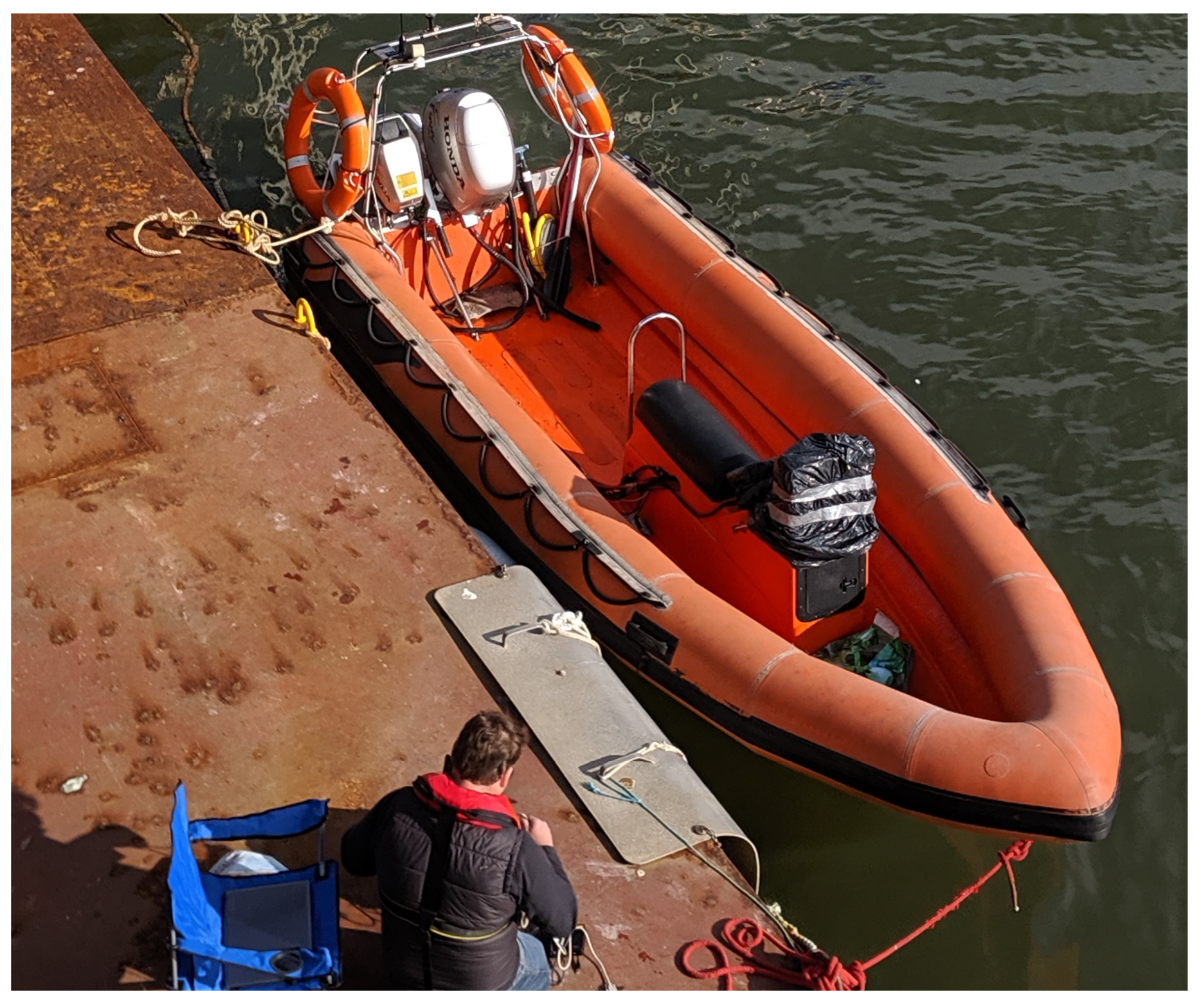
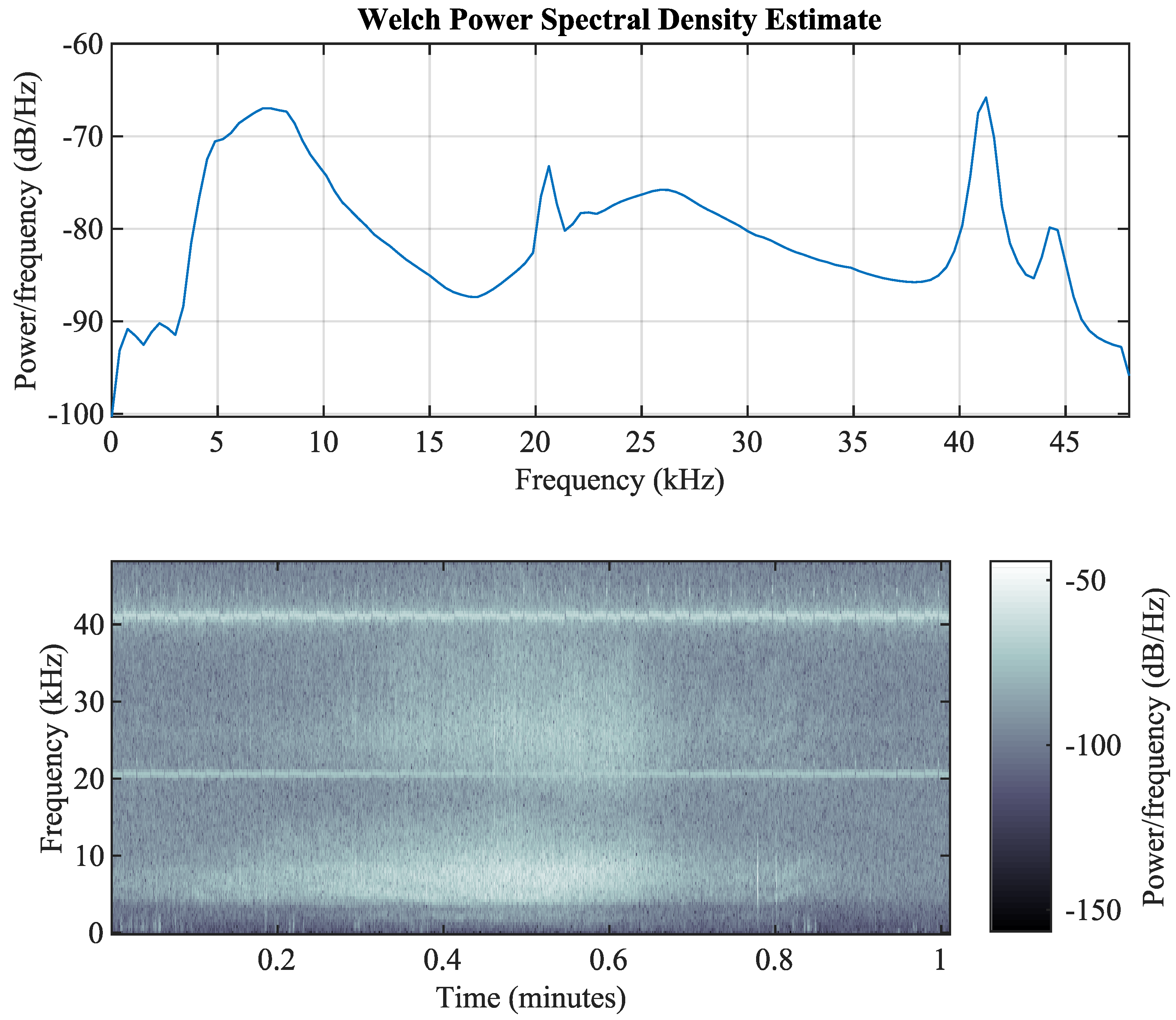

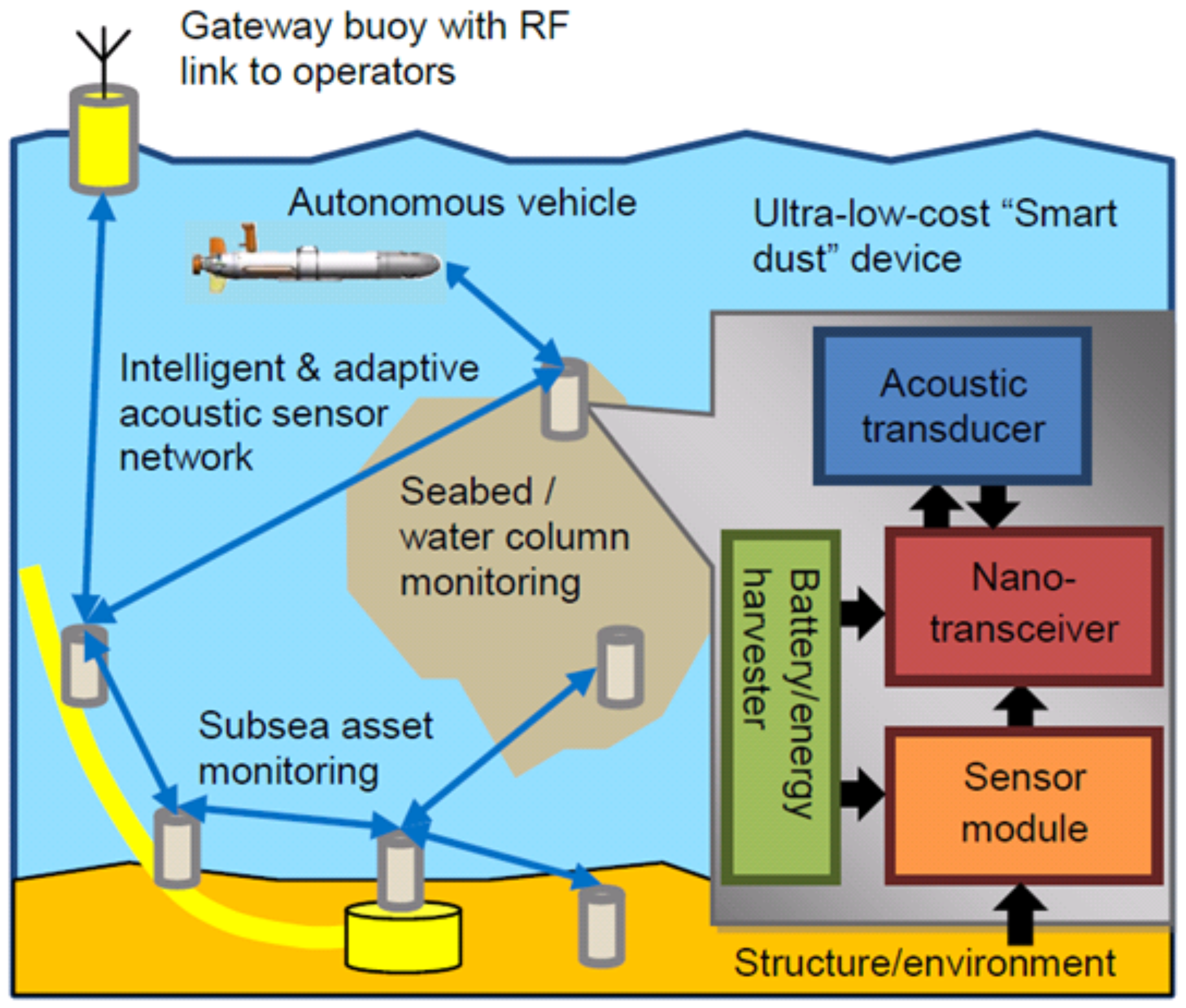




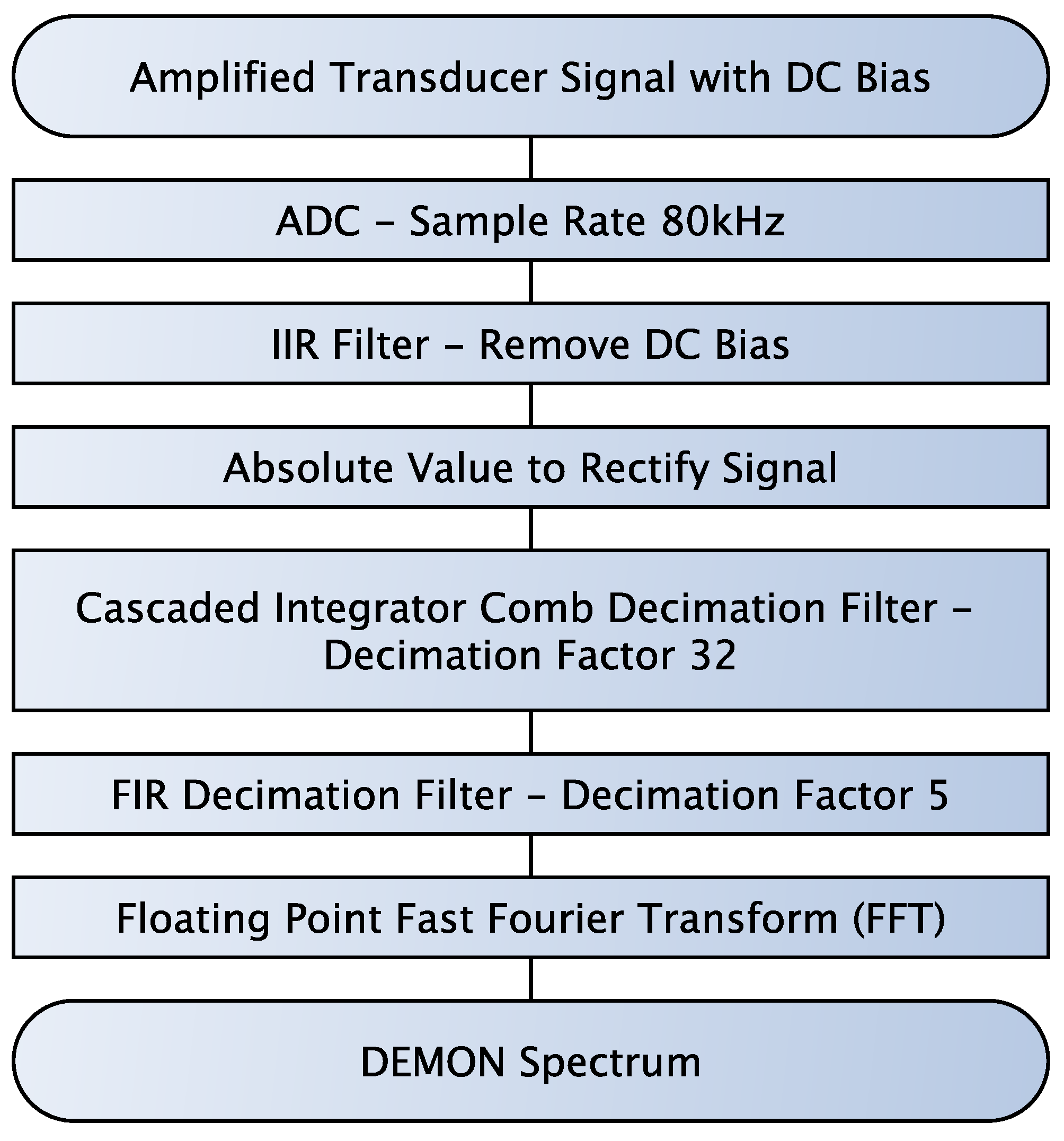
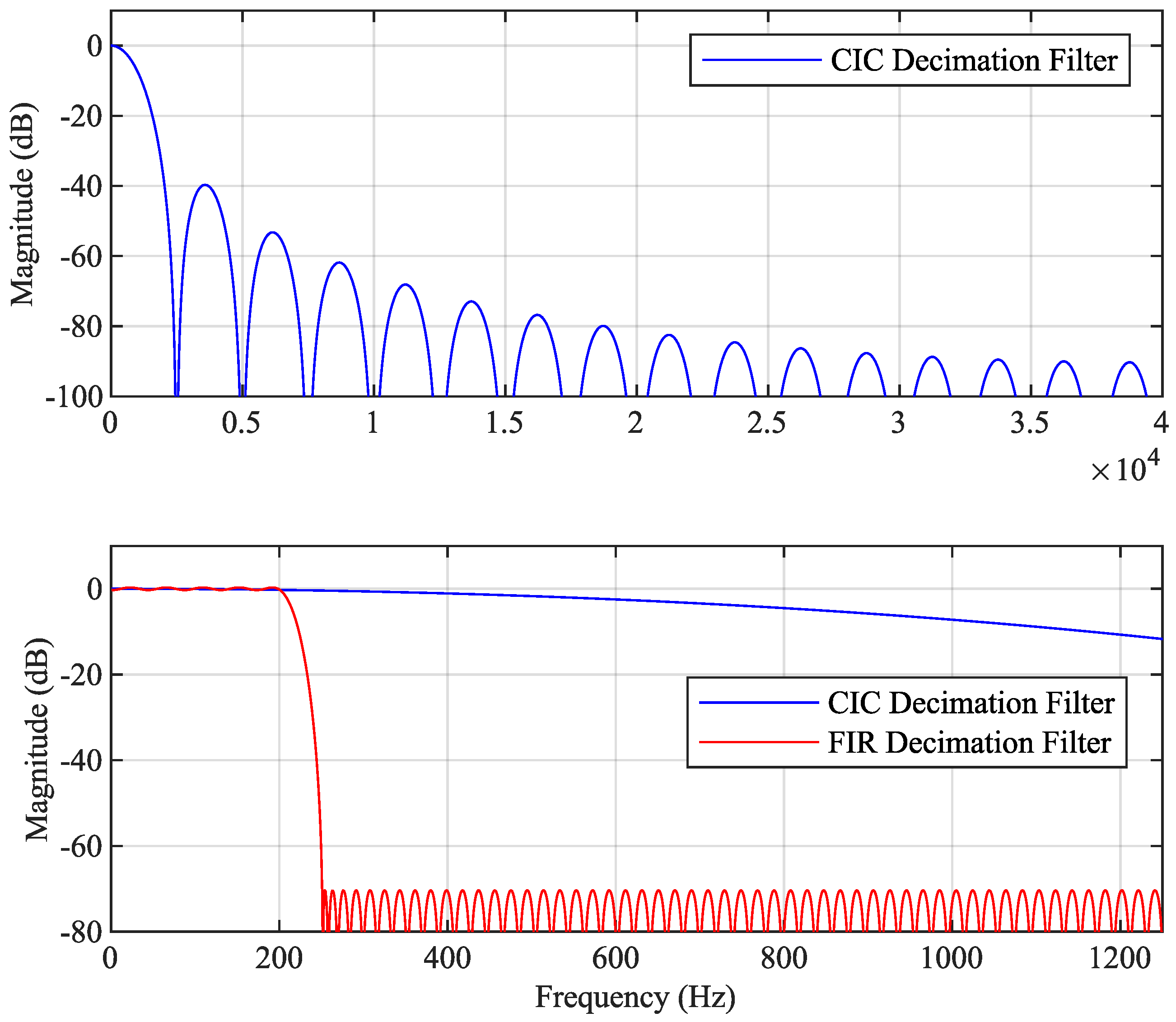


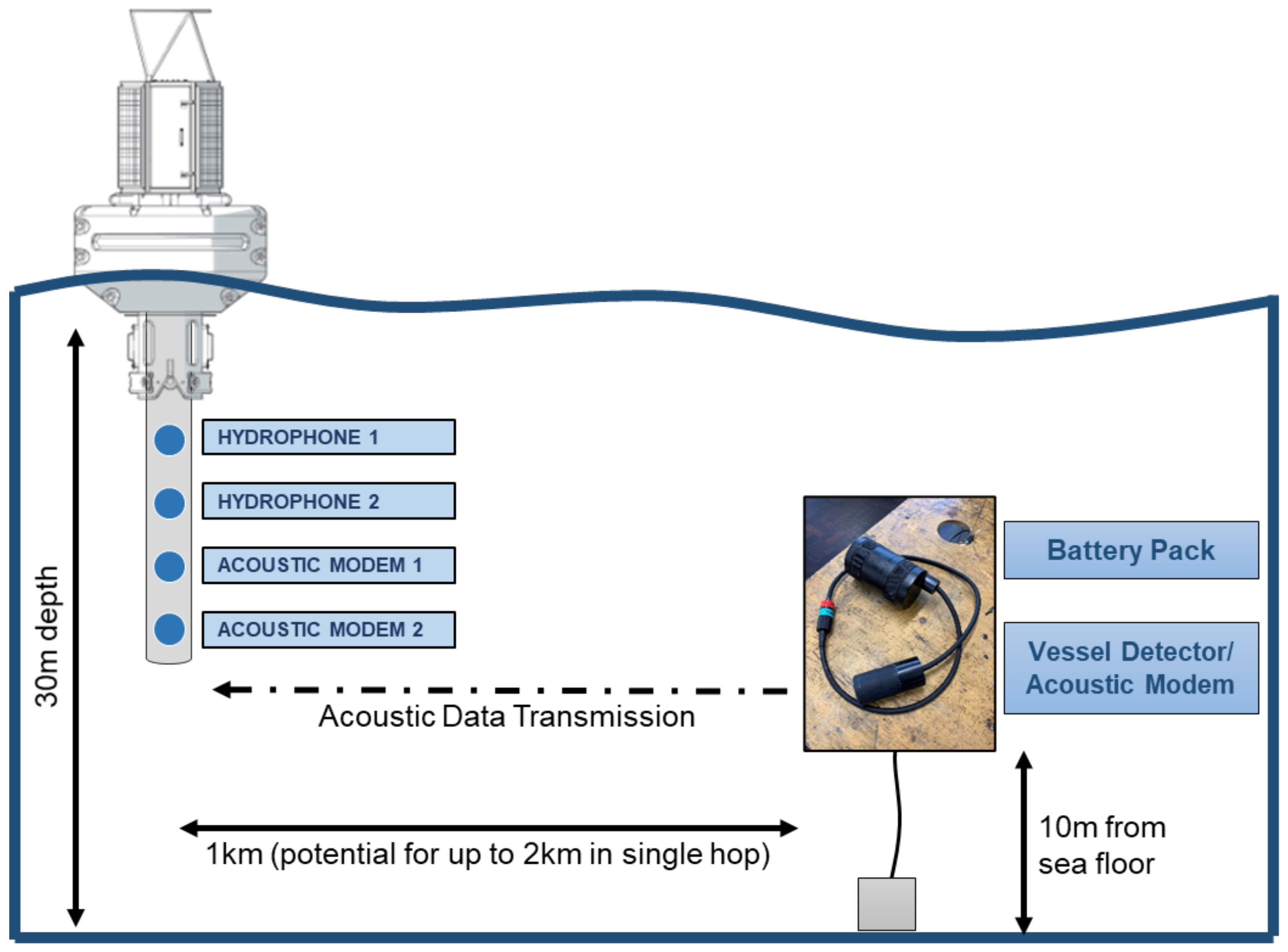




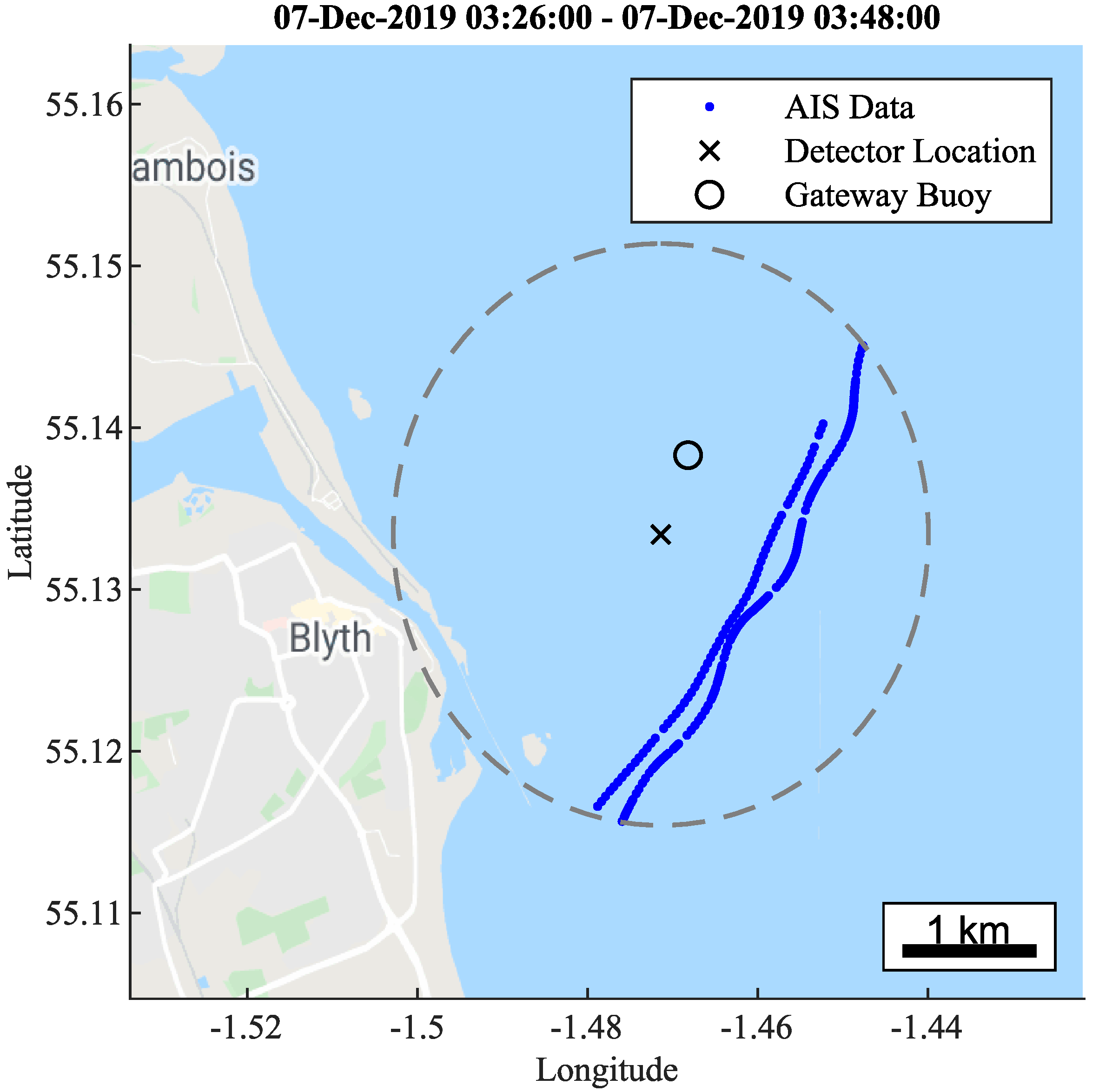
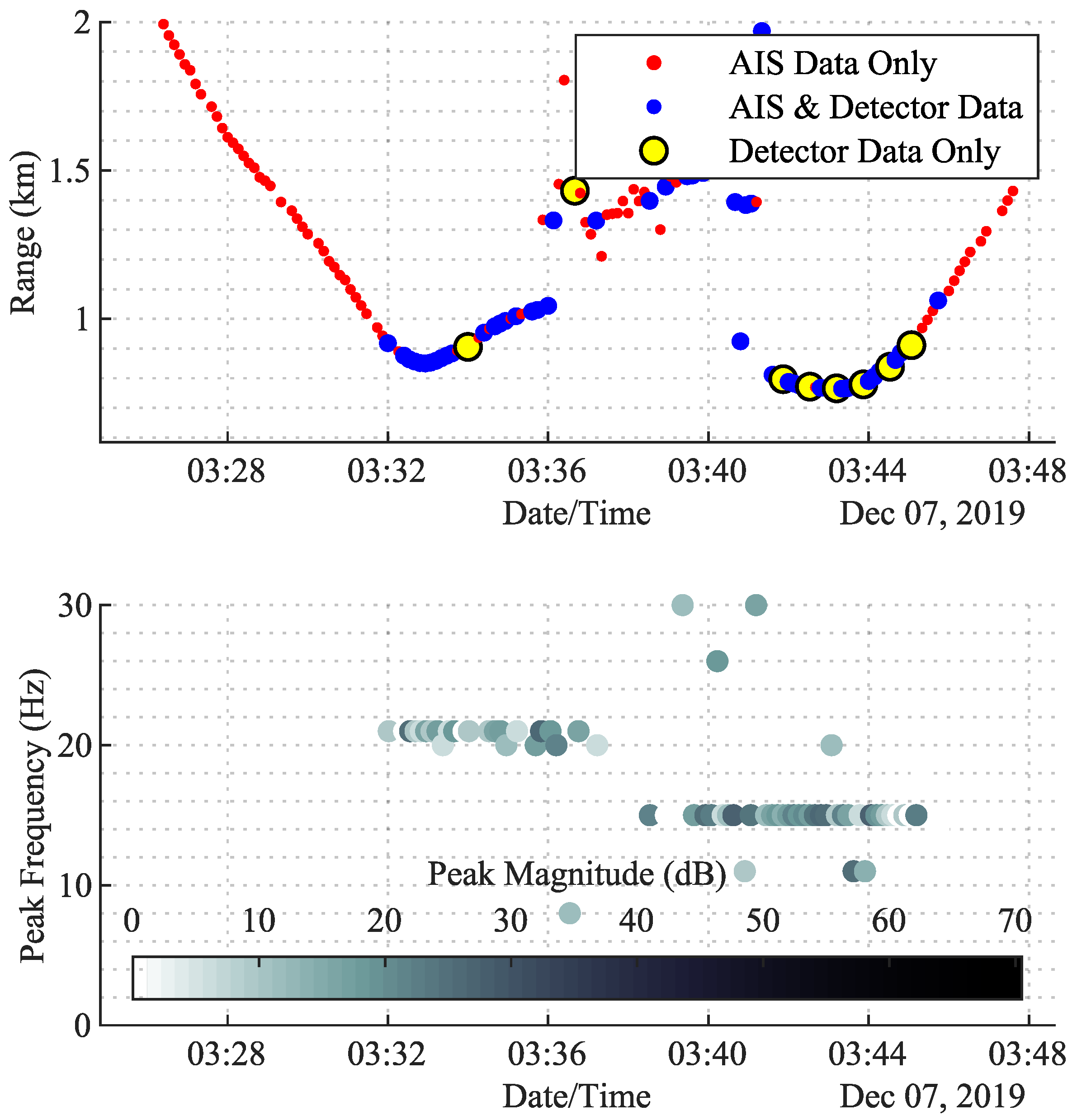
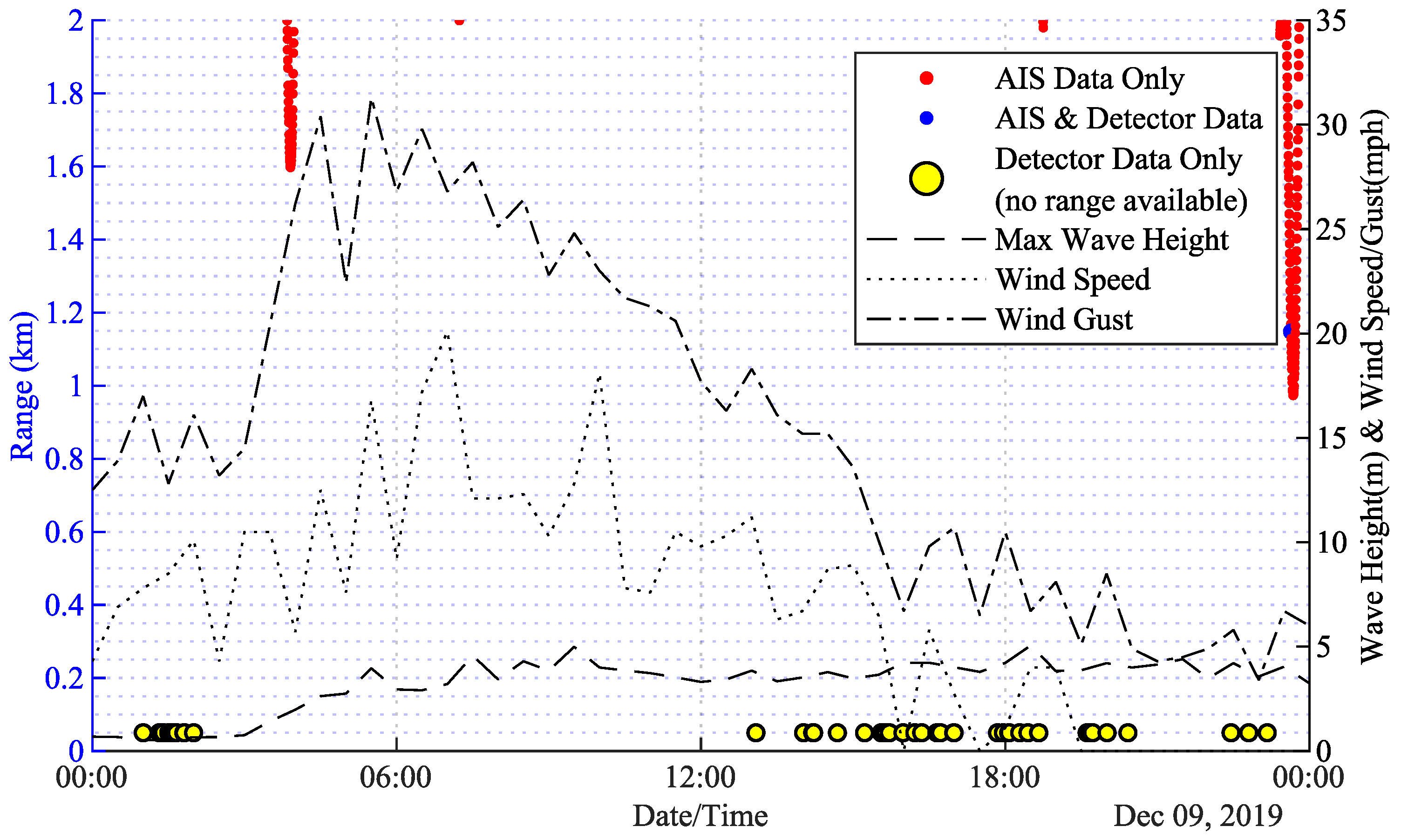
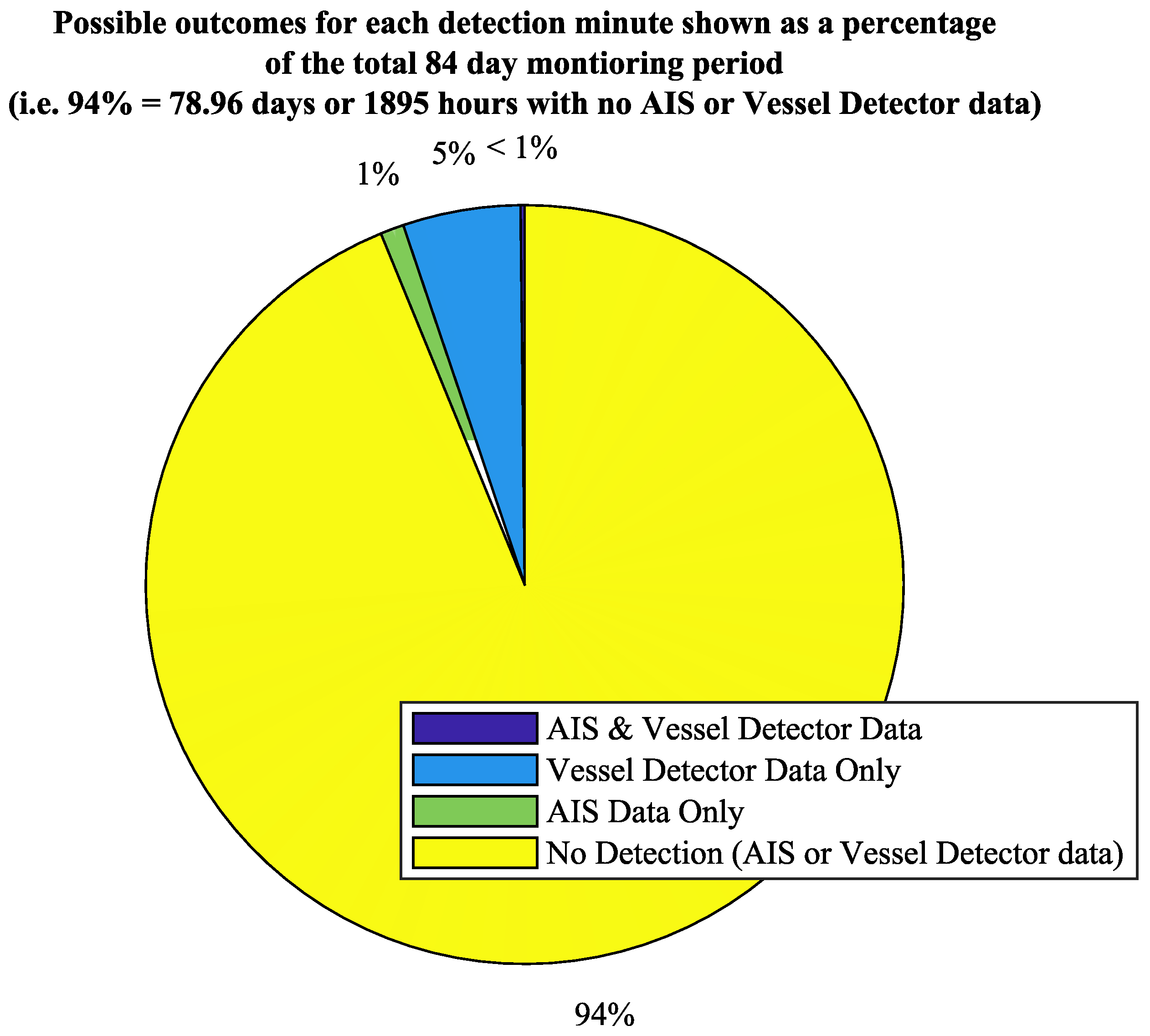
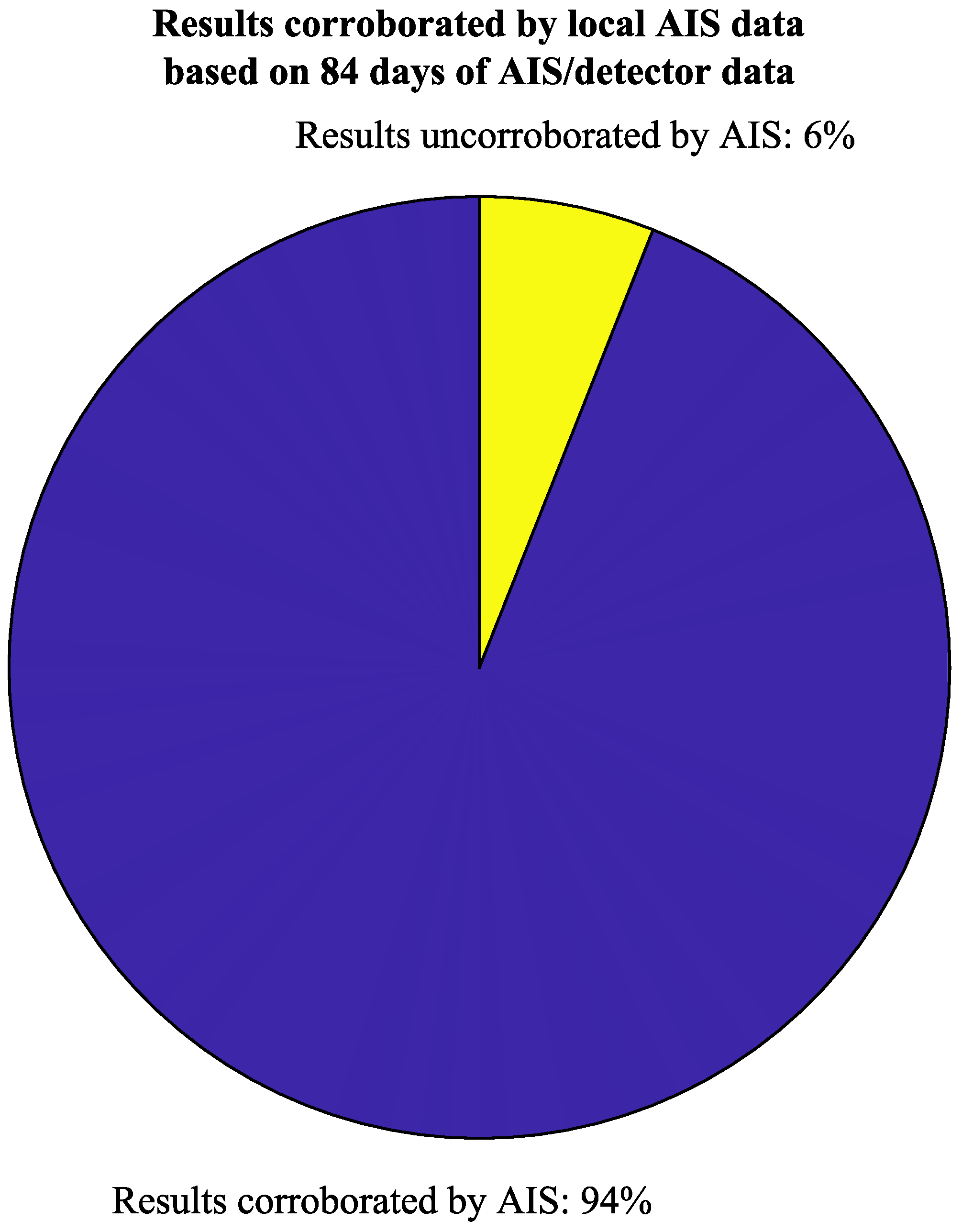
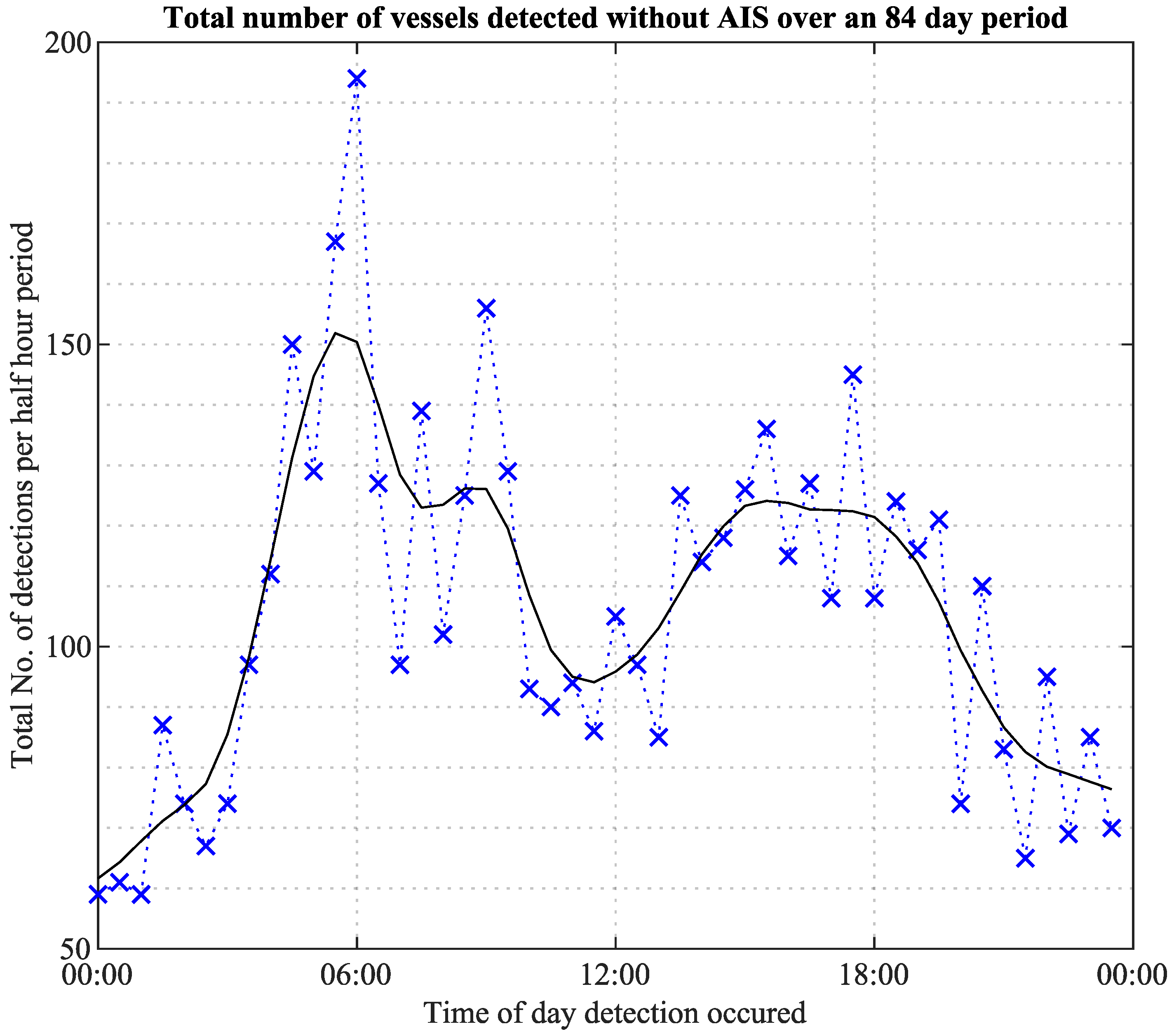


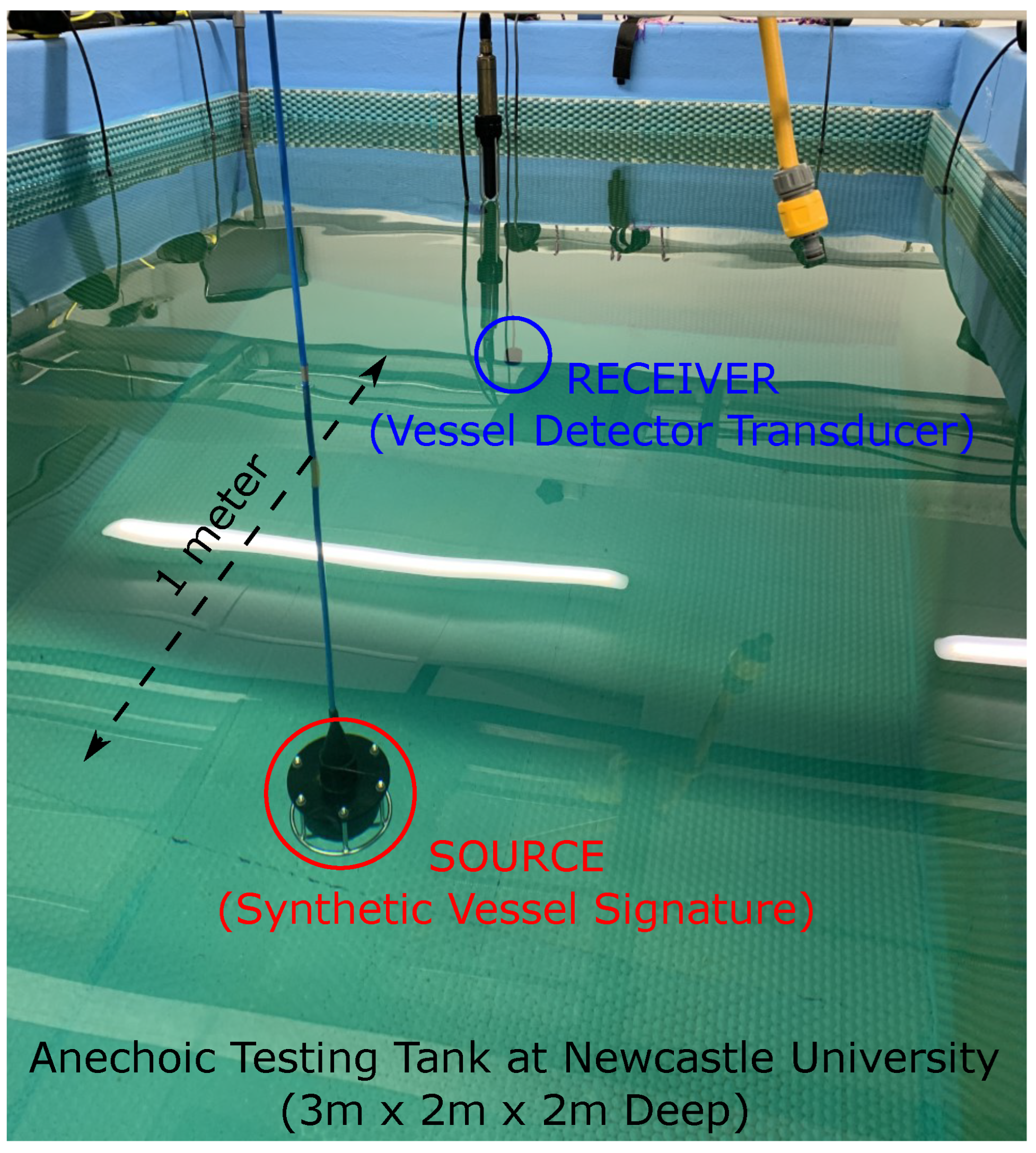
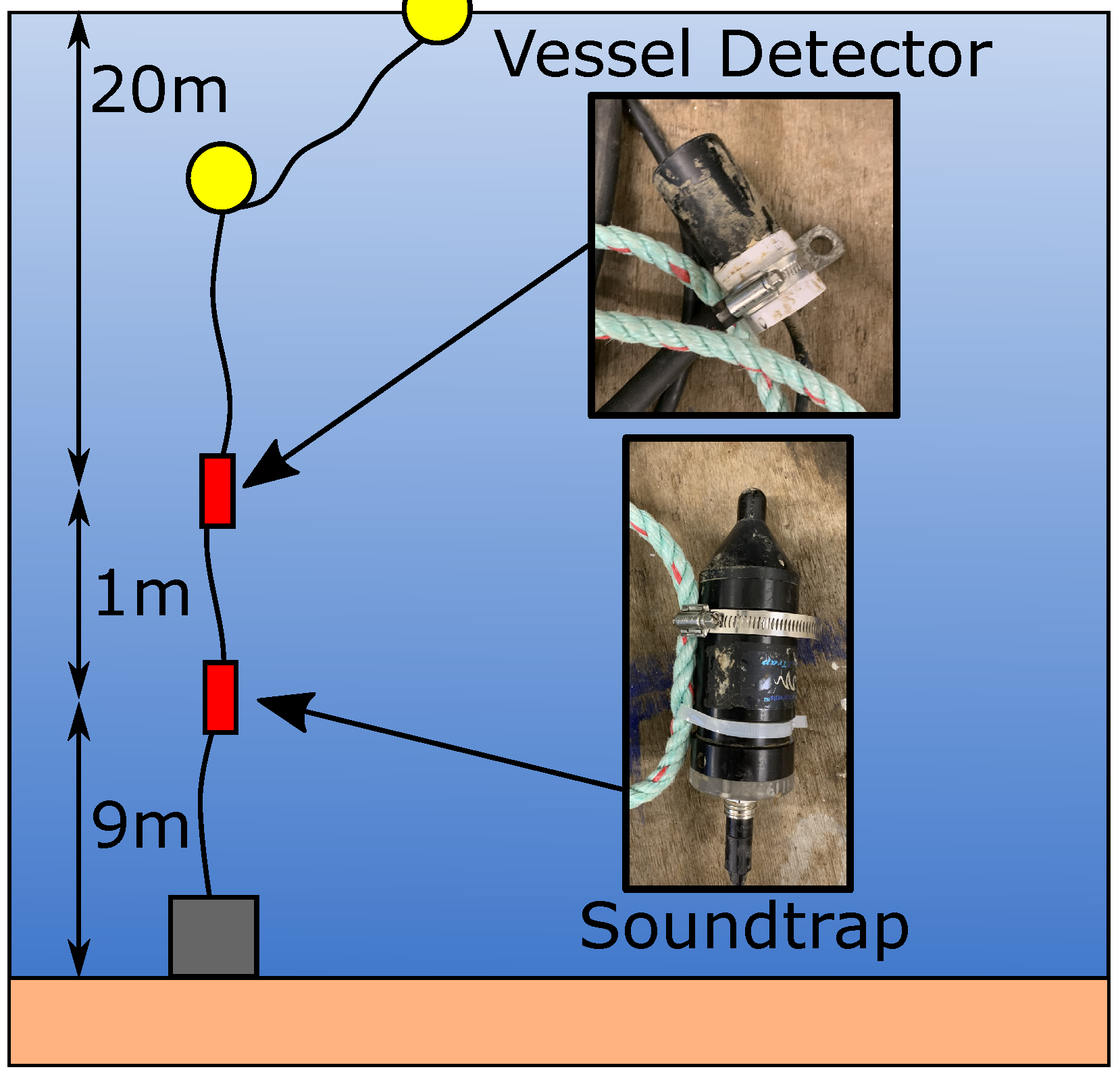
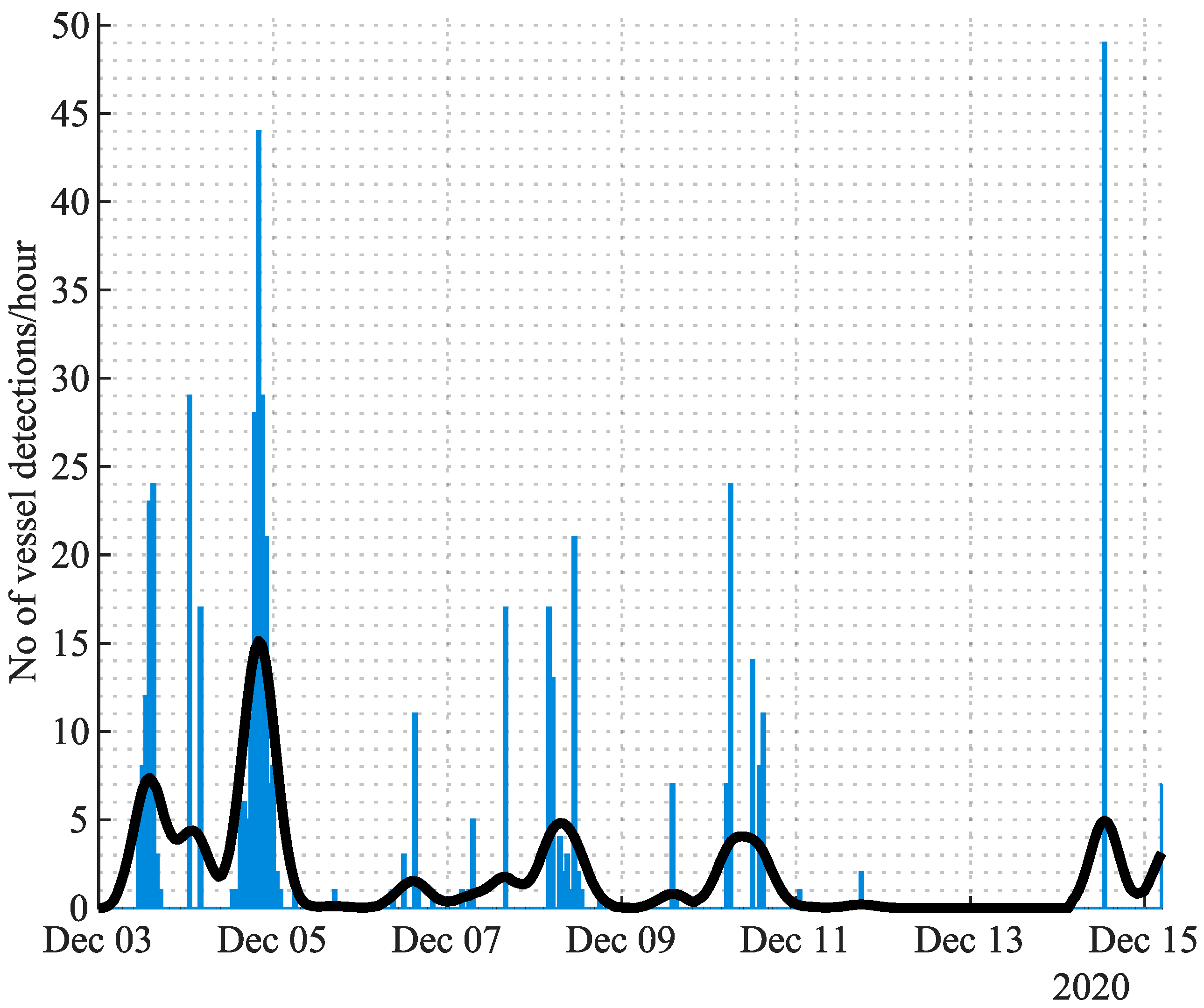

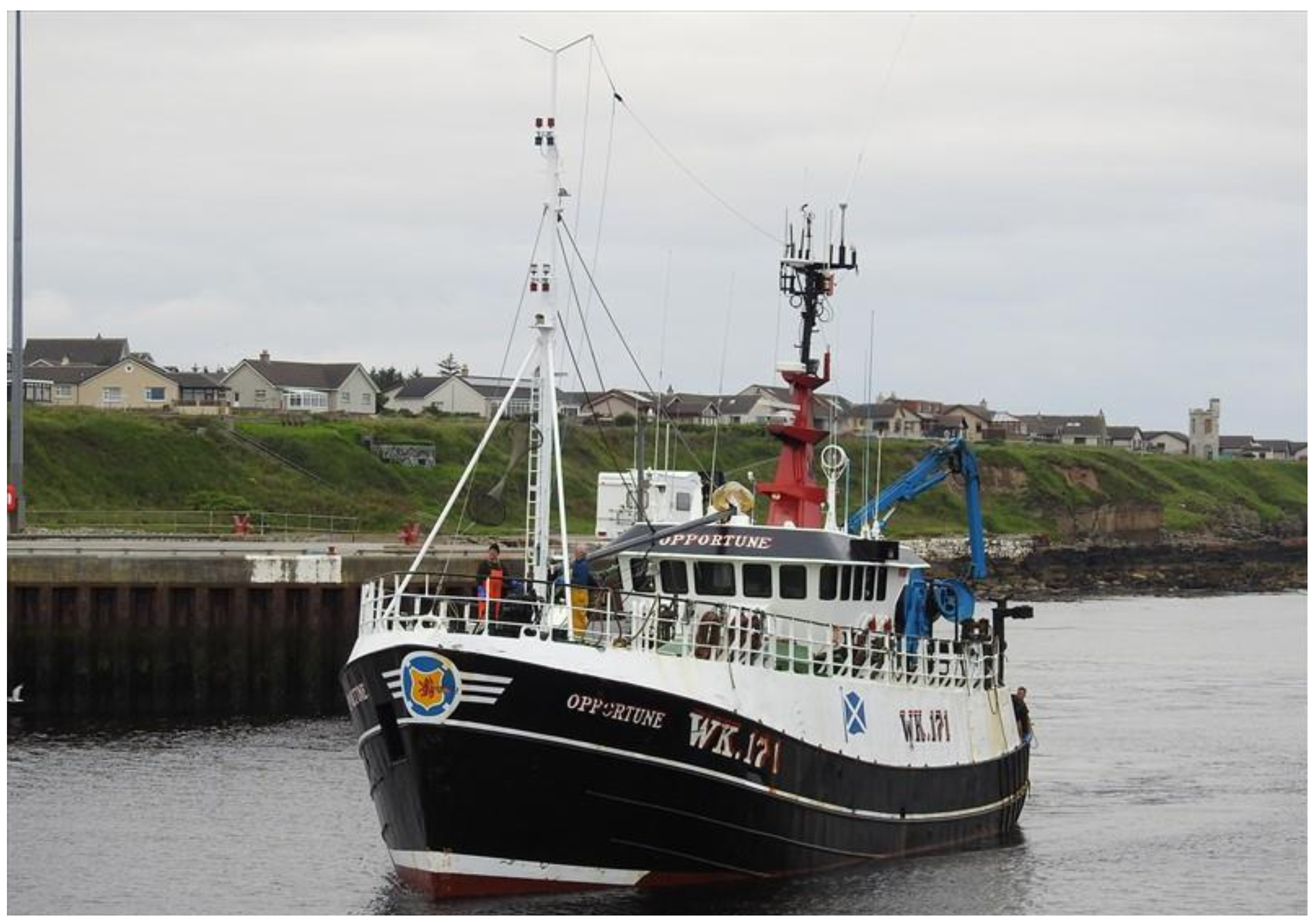
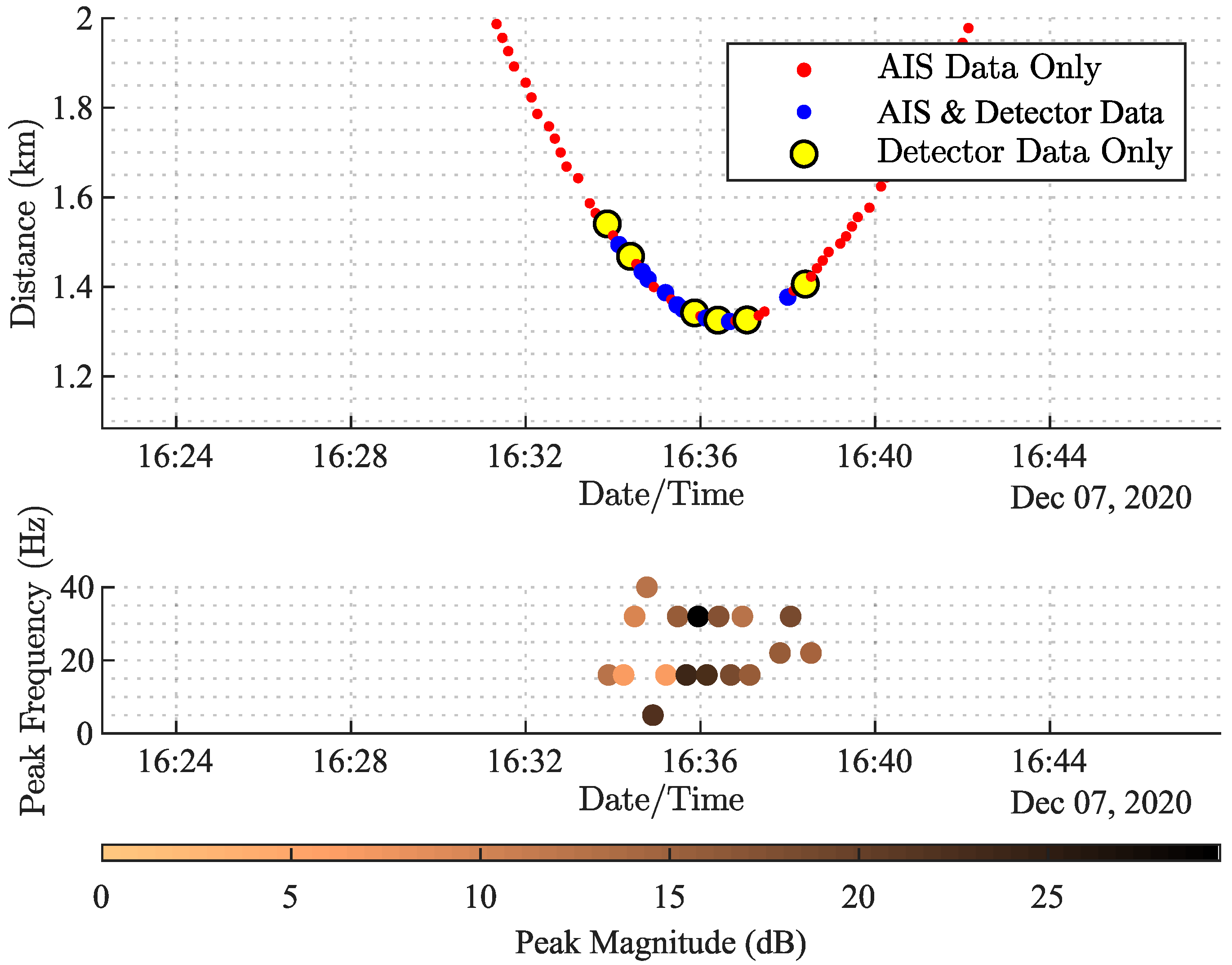
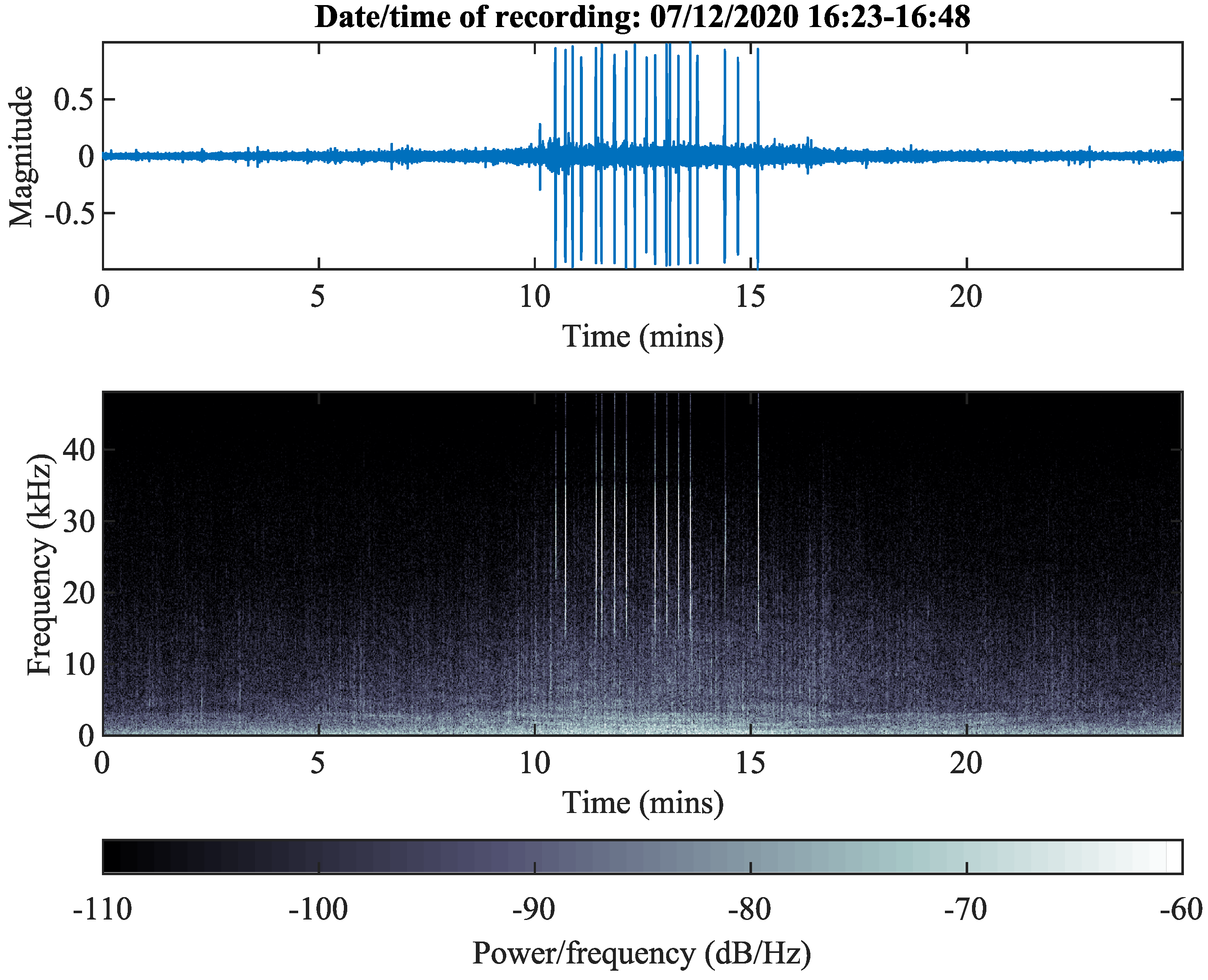
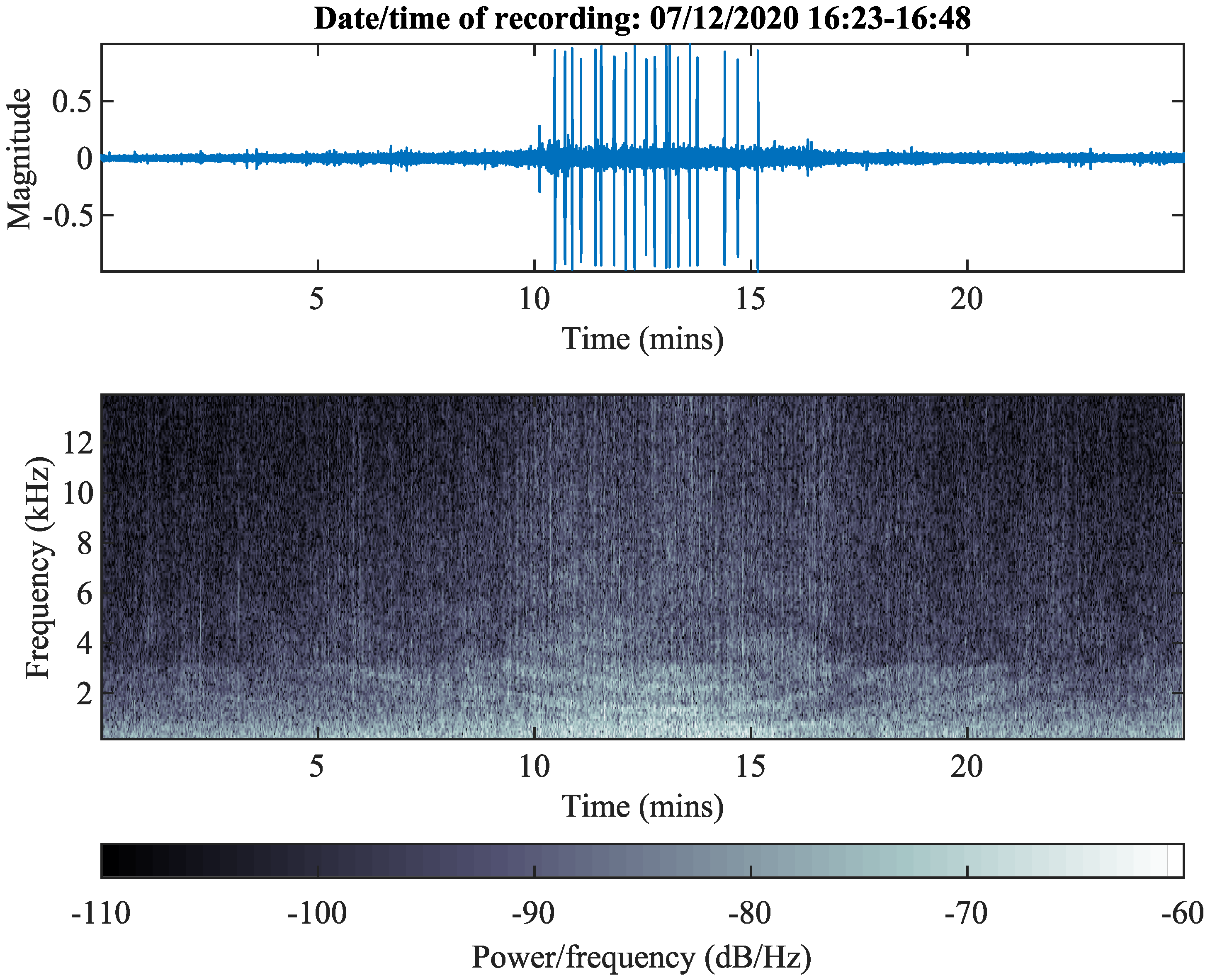
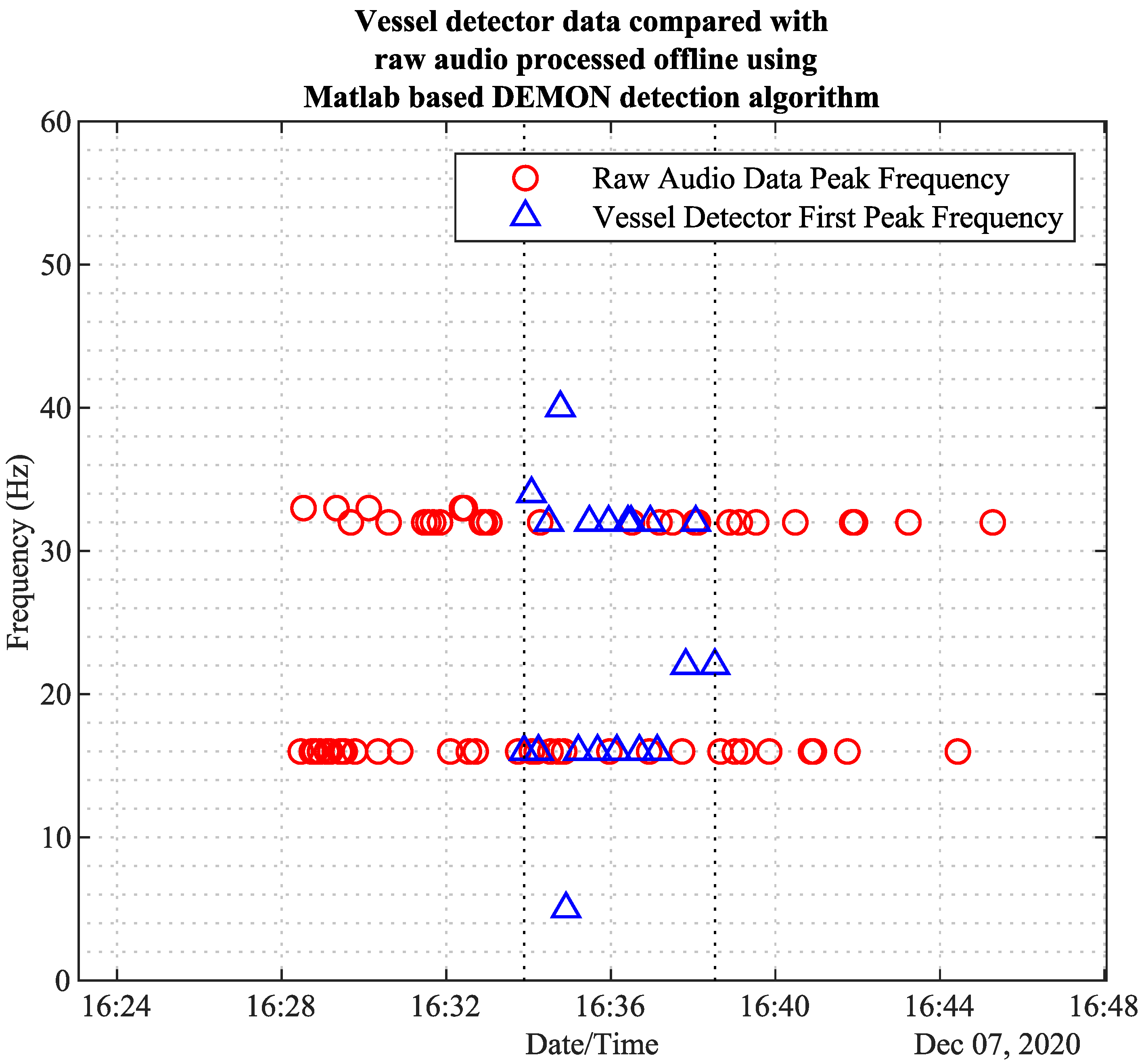
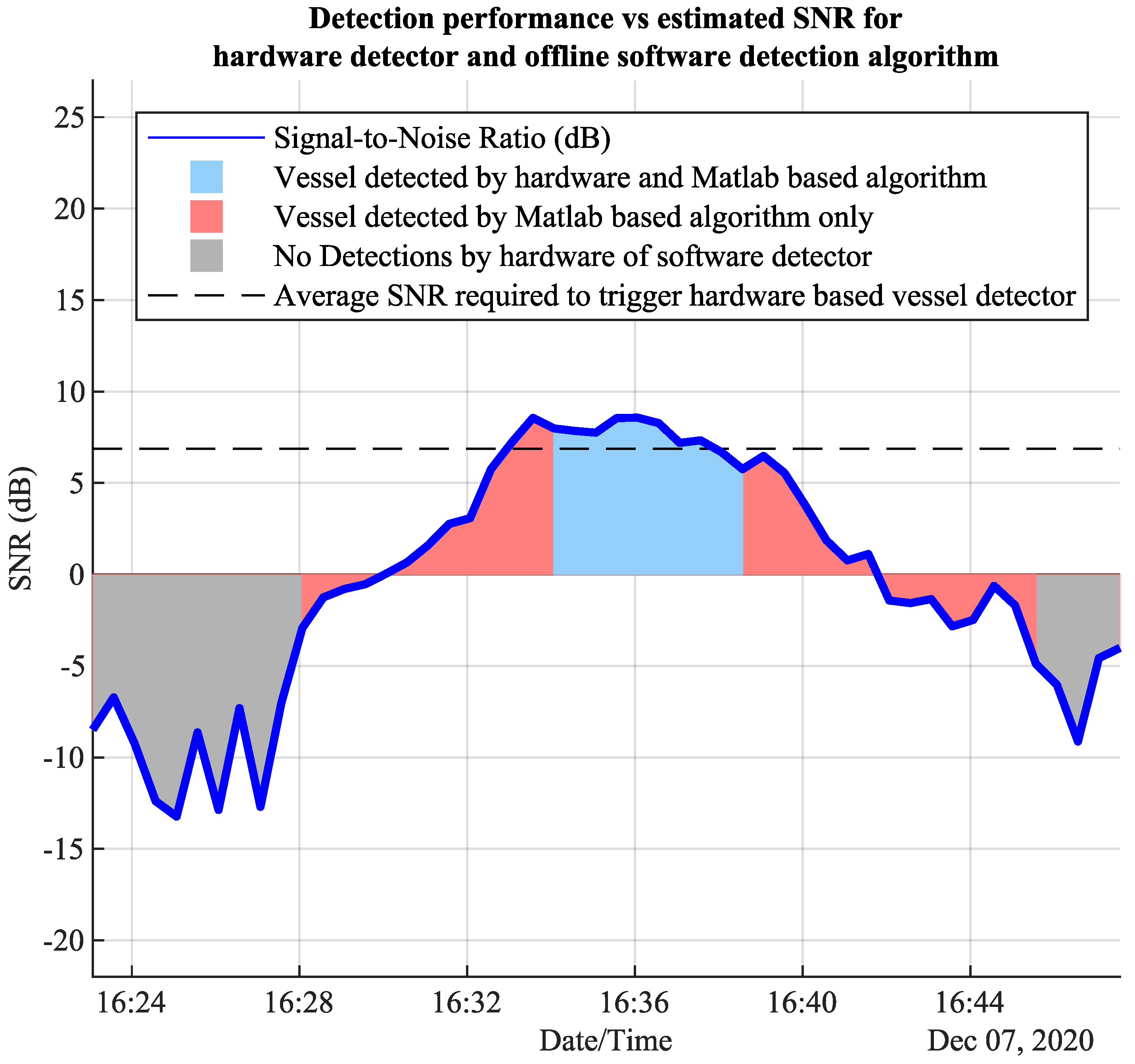

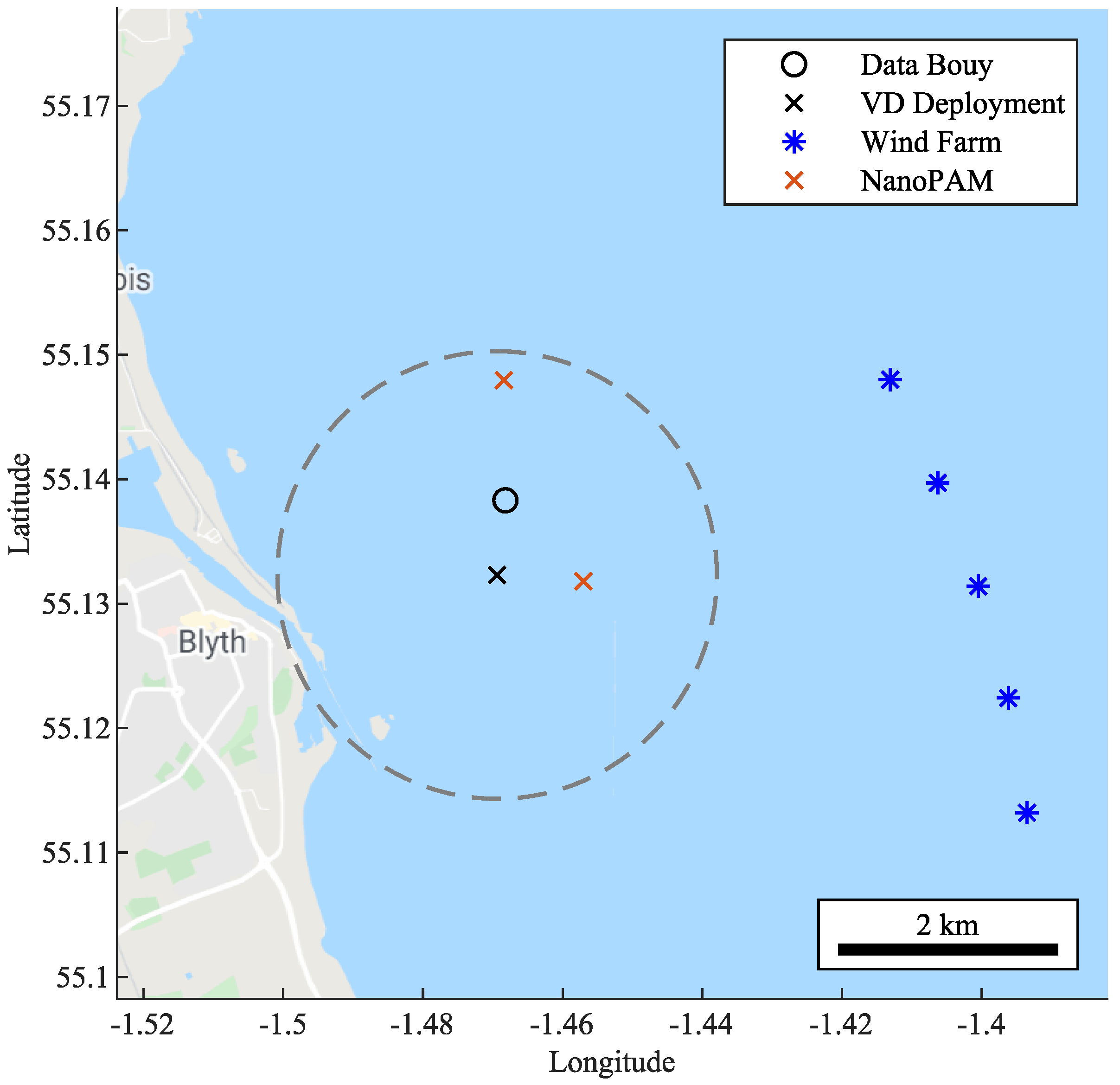
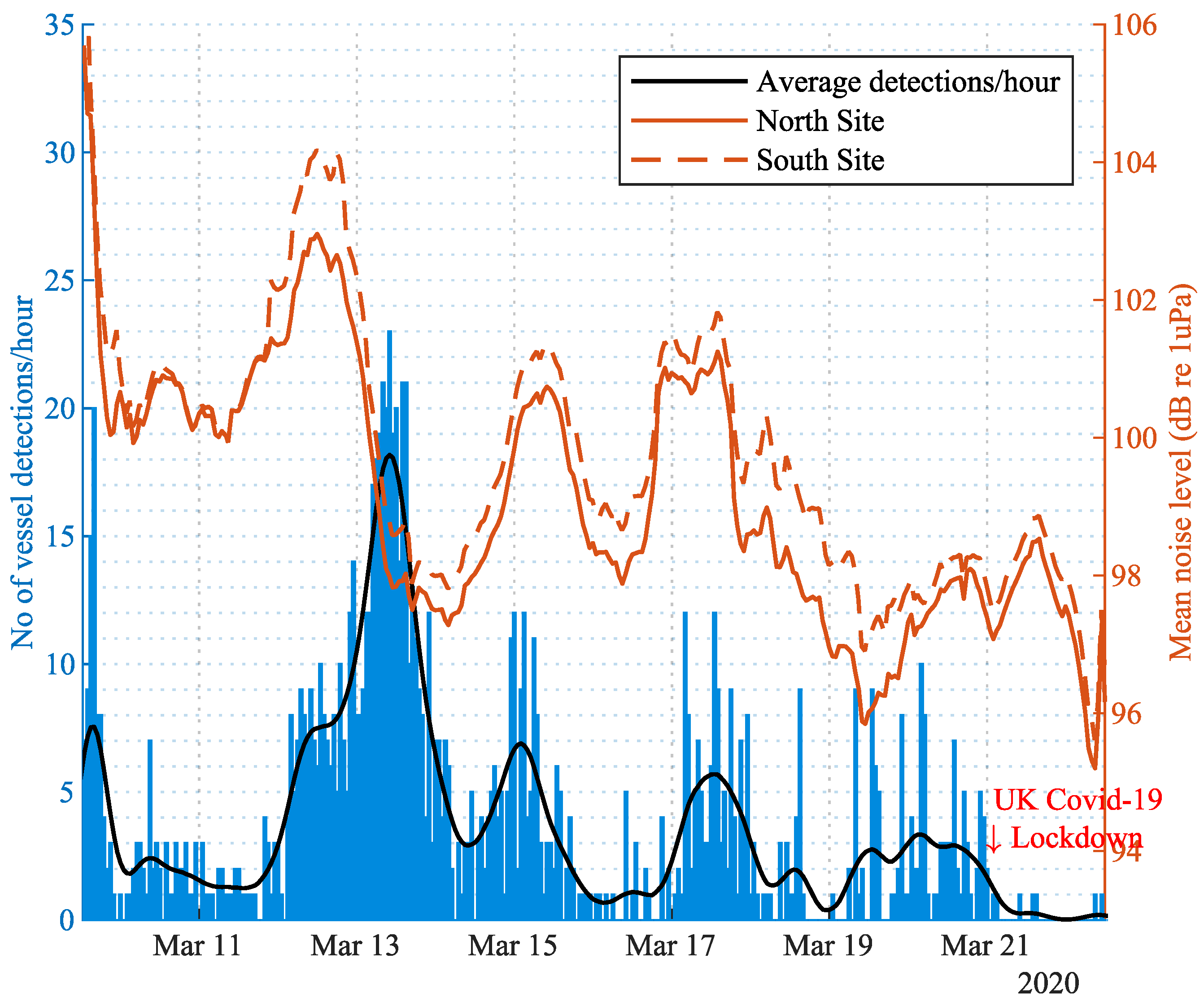
Publisher’s Note: MDPI stays neutral with regard to jurisdictional claims in published maps and institutional affiliations. |
© 2022 by the authors. Licensee MDPI, Basel, Switzerland. This article is an open access article distributed under the terms and conditions of the Creative Commons Attribution (CC BY) license (https://creativecommons.org/licenses/by/4.0/).
Share and Cite
Lowes, G.J.; Neasham, J.; Burnett, R.; Sherlock, B.; Tsimenidis, C. Passive Acoustic Detection of Vessel Activity by Low-Energy Wireless Sensors. J. Mar. Sci. Eng. 2022, 10, 248. https://doi.org/10.3390/jmse10020248
Lowes GJ, Neasham J, Burnett R, Sherlock B, Tsimenidis C. Passive Acoustic Detection of Vessel Activity by Low-Energy Wireless Sensors. Journal of Marine Science and Engineering. 2022; 10(2):248. https://doi.org/10.3390/jmse10020248
Chicago/Turabian StyleLowes, Gavin James, Jeffrey Neasham, Richie Burnett, Benjamin Sherlock, and Charalampos Tsimenidis. 2022. "Passive Acoustic Detection of Vessel Activity by Low-Energy Wireless Sensors" Journal of Marine Science and Engineering 10, no. 2: 248. https://doi.org/10.3390/jmse10020248





